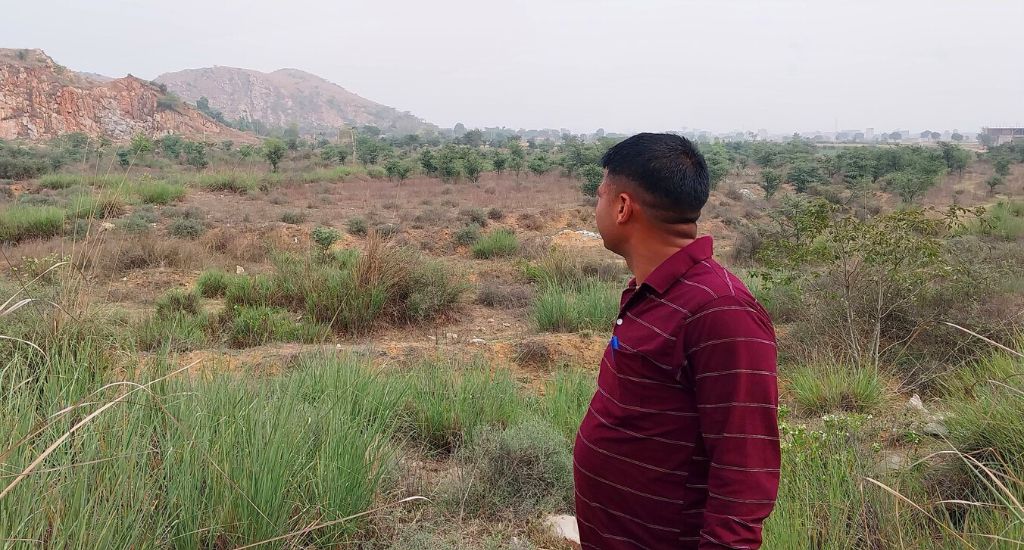
Bringing the Aravallis back to life
Tree species like sheesham, babool and others planted over 75 hectares of land that was previously mined illegally are helping restore greenery and bring back wildlife

Tree species like sheesham, babool and others planted over 75 hectares of land that was previously mined illegally are helping restore greenery and bring back wildlife
The sun is at its peak, and the only sound interrupting birdsong is the crunching of loose gravel under the feet. The precarious path has to be trodden carefully to avoid a fall. At times, the rocky terrain of the Aravallis gives way to ochre-coloured sandy soil. A sudden exclamation diverts the attention of the walkers. Sandeep Kumar, a forest guide, points at the scrubby vegetation ahead.
A herd of Asia’s largest antelope, the nilgai, gives them a fleeting glimpse before vanishing deep into the scrubland dominated by thorny trees. But their sudden appearance brings cheer.
“There are two groups comprising 50-60 animals. They are now being frequently seen here after mining has ceased. The deafening noise of blasts used to keep them away earlier,” Kumar, who works in the forest department, said.
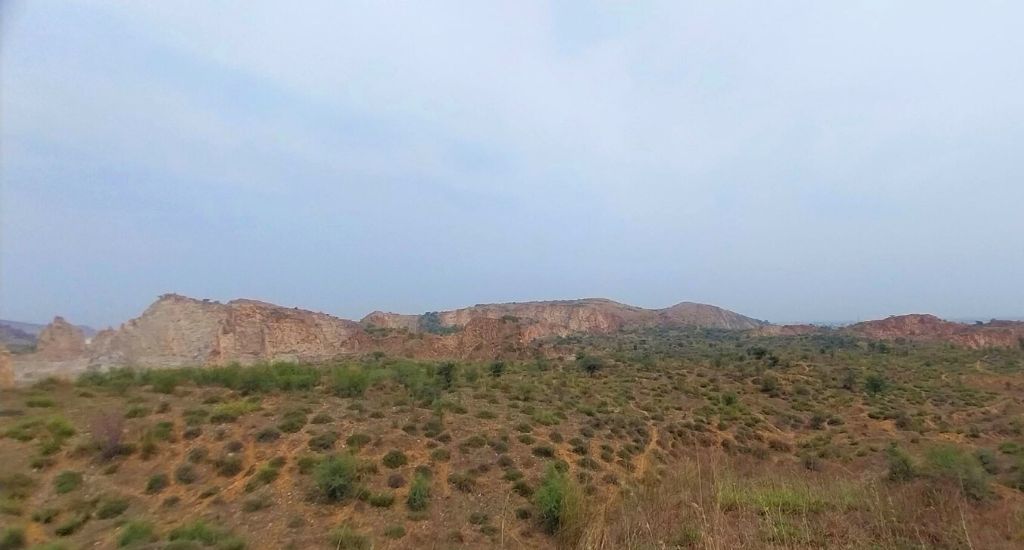
The Aravallis spanning Delhi, Haryana and Rajasthan have been infamous for stone mining to fuel the construction boom in the National Capital Region. Since the early 2000s, numerous crusher units mushroomed to scoop up precious gravel or bajri using heavy-duty machines which succeeded in denuding the mountain range.
As the hills vanished, the large-scale operation left its mark in the form of deep crater-like lakes filled with rainwater. At a few places, brown and rugged pyramid-like structures looked towards the blue sky, standing like solitary sentinels of an ancient land.
One such place is Kahrani village in Alwar district of Rajasthan which lies near the Bhiwadi industrial area, a pollution hotspot, on the Rajasthan-Haryana border. Mining started here in 2006. Continuous blasting until 2019 gave way to the formation of sand dunes as the hills slowly eroded and dust enveloped the village.
Also Read | Jungle Warriors: Odisha women set up jungle huts to save forests
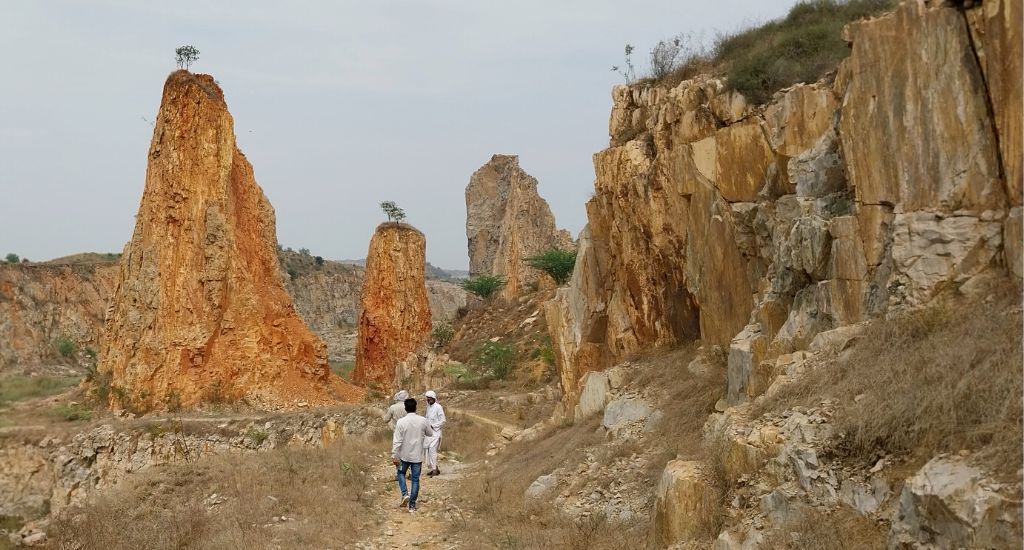
Stopping the mafia in its tracks is not an easy task but efforts to curb them began in 2013, when the Rajasthan forest department joined forces with the police to tackle the issue.
“A multipronged strategy was adopted to choke the supply unit and stop the crushers from working,” said Apoorva Krishna Srivastava, the divisional forest officer of Alwar. “When it succeeded, the department thought about rehabilitation in Kahrani through reforestation and by removal of encroachments spread over 14 hectares. Now, it is a revived area,” he added.
Plantation activity started in 2019-2020. The local residents were involved in the exercise through meaningful dialogue. Now, an area spanning 75.7526 hectares looks transformed. It is the result of eight months of hard work, accomplished in the presence of the Rajasthan Armed Constabulary, a special force that guards the international border. The security personnel camped in three tents pitched at the forest check post to ensure that the drive continued smoothly. Armed with guns, they watched as 10,000 saplings of native tree species suitable for an arid area, such as babool, ronj churail, sheesham and ber were planted.
A few months after the plantation activity was started, the baya weaver bird was spotted, giving the first indication of a ravaged forest getting healed
The area was also covered with the locally available moonj grass to provide livelihood options to the local residents. The grass, which binds the soil, is used for thatching roofs as well as making brooms and handicraft and furniture items, such as the low stool or moodha and the popular changeri, a shallow round basket.
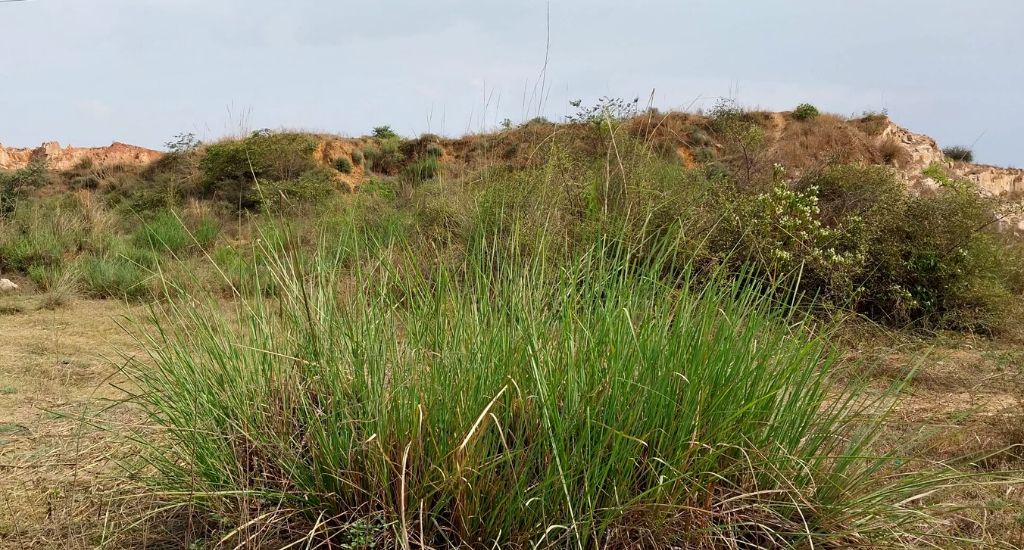
“A few months after the plantation activity was started, the baya weaver bird was spotted, giving the first indication of a ravaged forest getting healed,” Srivastava said.
The initiative had to battle quite a few challenges along the way.
“The locals from Kahrani who were involved in illegal mining tried to stop the plantation work,” Saddiq Khan, who works as a security guard, said, between the guttural sounds of his hookah.
Also Read | Assam’s wildest jungle safari
Saddiq Khan comes from Sarheta, located about 40 km from Kahrani. He earns Rs 10,000 per month and supplements his income by keeping a number of buffaloes for milk. His watch intensifies at night.
Some villagers, however, helped the forest department against all odds. Kahrani resident Fazruddin Khan brought labourers from outside amid opposition in the village.
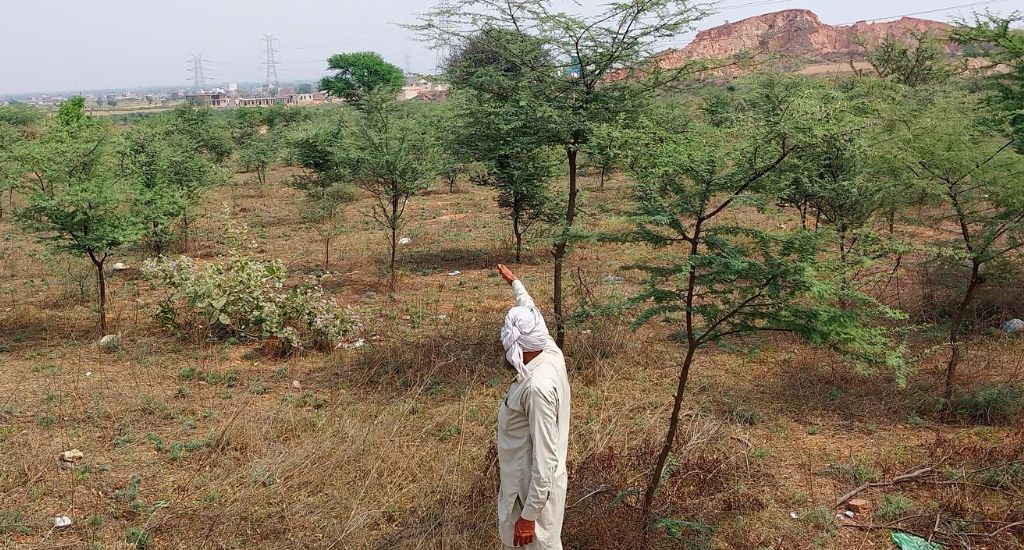
As Kahrani lies in an industrial belt, the presence of farmland is limited. A walk around the village shows a few women armed with sickles harvesting the jau (barley) crop. Their faces are covered to soften the sunrays. Near them lie a few hut-like bateoras. The mounds are filled with dried cowdung patties that are used as fuel. The surface of each mound features intricate handmade designs made by women who are experts in the art.
“Labourers came from outside to work on the site every day,” Saddiq Khan recalled.
“Normally about 50 labourers arrived, but on some days the number was more. They worked the entire day under the watchful eyes of the armed personnel,” he added.
Also Read | Community restores private forests for sustainable future
They also had to face threats, Saddiq Khan’s wife, Haruni, said, stirring kadhi, a popular yogurt dish that’s much relished in summer in the area where mercury often crosses the 40-degrees Celsius mark.

That the threat persists is evident from the fact that the site is monitored by a forest protection committee set up by the department in 2015. The lush greenery and animal sightings seem to show that the efforts are bearing fruit.
The lead image at the top shows forest guide Sandeep Kumar at the restored area (Photo by Deepanwita Gita Niyogi)
Deepanwita is a journalist based in New Delhi. An alumna of Asian College of Journalism, she writes about rural development, gender and climate change.